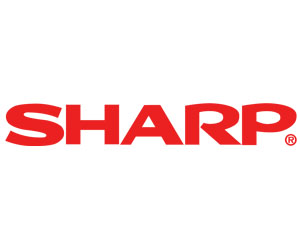A traditional lamp would require replacement 12 times over the same time span, if used as often.
Easily Connect Classroom Devices to the Projector
Setup was about as easy as it could be. I set the projector on a table approximately 20 feet from my 100-inch movie screen, plugged it in and powered it up.
I immediately noticed how quiet the internal fan was. I asked a nearby student if he could hear anything. The student leaned his head near one of the exhaust vents and said, “Barely.”
The NP-M430WL can connect to a variety of digital devices in myriad configurations, thanks to two HDMI ports, a VGA 15-pin port and even a video RCA port.
I attached the projector to my laptop via an HDMI cable. Once I selected HDMI1 on the included remote control and could see my computer’s screen being projected, I only needed to make a few adjustments.
KEEP READING: How has classroom technology evolved from 1659 to today?
First, I raised the projector’s back slightly by simply turning the two rear adjustable feet. Next, I adjusted the zoom setting until the picture filled my screen. Finally, I adjusted the focus dial until the picture was crystal clear. It was bright, in stark contrast to the picture from my old lamp projector, which produces a washed out, tired image.
The NP-M430WL also is built with HDMI Consumer Electronics Control. This allows IT pros to help teachers combine the settings of all compatible devices, such as Blu-ray players, streaming sticks, gaming consoles and more, into one remote. This makes it convenient to switch between devices, change the volume, play videos back and use other common functionalities. Teachers will only need one remote.
Although the NP-M430WL does not have wireless connectivity, this feature is supported. It can be added by connecting a third-party wireless dongle to the HDMI 2.0 port, which receives power from the DC 5-volt USB-A port.
Laser Produces Bright Images and Supports Faster Frame Rates
Many teachers, like myself, prefer to teach with the lights on, but because traditional lamps’ color and brightness fade over time, we often turn the lights off. However, this raises some concerns. Safety is compromised when the lights are off; someone could inadvertently trip over a backpack or the leg of a chair.
Remarkably, even with the lights on, students could easily and clearly see the screen with the NP-M430WL, and they could read words with smaller fonts than they were able to using my lamp projector. Students commented on the clarity too. I heard one student say she felt like she was looking at a high-definition TV.
RELATED: How can IT leaders make learning accessible for students with low vision?
An additional feature of the HDMI 2.0 port on the NP-M430WL is that it supports high bandwidth, 4K and frame rates up to 60 frames per second. This means teachers can stream or host esports tournaments at full resolution.
This isn’t the case with HDMI 1.4, which only supports 30 fps. During testing, the NP-M430WL facilitated an excellent gaming experience. I connected a PlayStation 4, and gameplay was smooth, with zero latency and no visible dropped frames.
Audio Clarity Allows All Learners to Hear Videos Through the Projector
For those classrooms that do not have audio systems installed, the NP-M430WL produces enough sound to adequately fill an average-sized classroom.
During testing, with the projector connected to my laptop via HDMI, I streamed a video tutorial from YouTube. First, I set the video and computer’s volume to its maximum. Then, using the remote control, I set the volume to 50 percent.
I asked my students to raise their hand when they felt the volume was loud enough to hear. At 70 percent volume, most hands were raised, and by the time I reached 80 percent, virtually every hand was up.
The built-in 10-watt speaker pumped out enough volume to reach the back of my classroom. One student was surprised to learn the sound was emanating from the projector, remarking that it sounded like the sound’s source was only a few feet away.
SPECIFICATIONS
DIMENSIONS: 13.3x 4.7x 10.4 inches
WEIGHT: 9.7 pounds
RESOLUTION: 1280x800 (1080p native resolutions)
BRIGHTNESS: Up to 4300 lumens
INPUT: 2 HDMI (2.0 and 1.4); VGA; RCA video; audio stereo mini jack
AUDIO OUT: Stereo mini jack
BUILT-IN SPEAKER: 10 watts
Brought to you by:











